Many if not most of the towels I pick up on the beach are either so sandy or stained that to wash and clean would take gallons of water and would be fiscally and unsustainably irresponsible. Sometimes it is a hard call– save water or rescue textiles out of the landfill. The question arises, is how to reuse old, sandy, ripped and stained beach towels, without having to wash them? This viral towel planter seemed to be the easiest solution. A quick trip to pick up Quikrete, I have the 5 gallon buckets (from the beach) a tarp (from beach trash).. and voila, a quick planter that should take no more than 30 minutes and a great way to reuse those sandy beach towels… Another lesson learned… do not believe any viral DIY Easy projects you see.
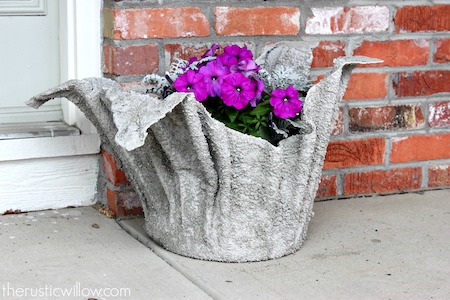
Then it was karma.. meant to be! Found this kids pool by the beach trash can in front of my court. Perfect, mix the concrete in the pool, no mess, no fuss….. OK….
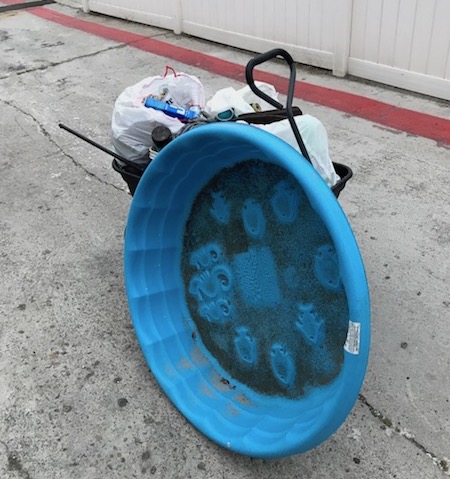
Should have known better… All the DIY recipes call for a bag of Quikrete.. Quikrete comes in 10-20-40-50 pound bags. So what is a half bag as it states in the DIY sites? I bought a 40 pound bag, thinking this should be good for 4 towels.. I got 1.5 planters out of it.. but if had mixed it right could have got 3 planters.
All the recipes say make the concrete mix a little soupier than you normally would. Having never done anything in concrete before, how the heck would I know what is soupier? Nobody addressed how heavy the concrete is and how fast you have get the towel in and mixed up before the concrete gets really heavy and unmanageable.
Most also say all you need is two- 5 gallon buckets… One bucket to mix in and the other to drape the towel over. Try taking a large towel and mix it in the 5 gallon bucket with the slurry. Recommendation use a shallow pool, so you can really mix the towel in.
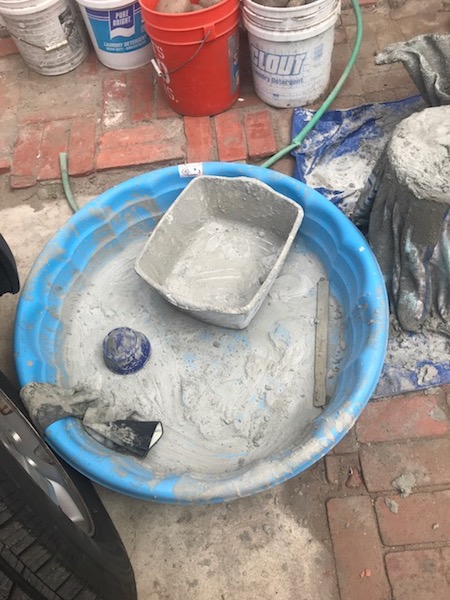
Another issue not addressed, is getting the bucket back out. I could not get the bucket out. The square bucket did not get enough concrete mix and thus drooped. After finding another video, it said to place a plastic bag over the bucket.
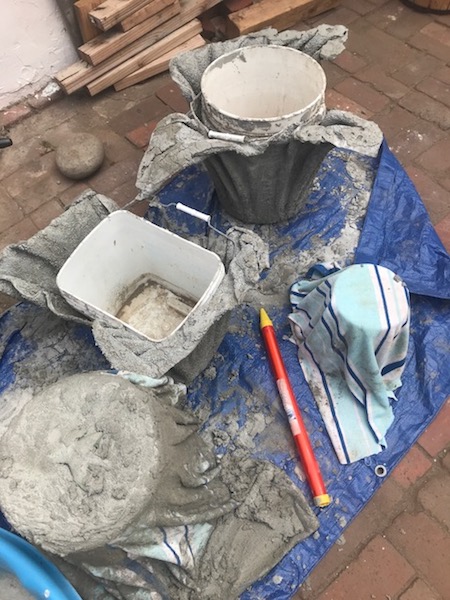
The instructions did say to cut the fabric so it does not hit the ground Do that or you get a flat-stuck-to-the-ground rim. I ended up painting the whole enchilada with the bucket.
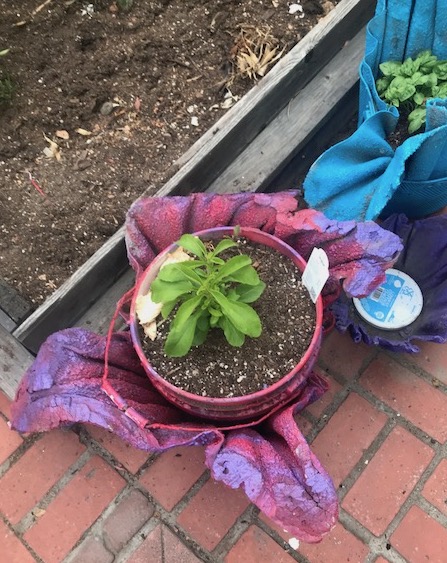
Trying with more concrete (one 20 pound bag) and making it more soupier, and using the plastic bag, it worked, except this time, the concrete was too soupy and still fell over. I stuck it in a bicycle basket found on the beach and painted it .
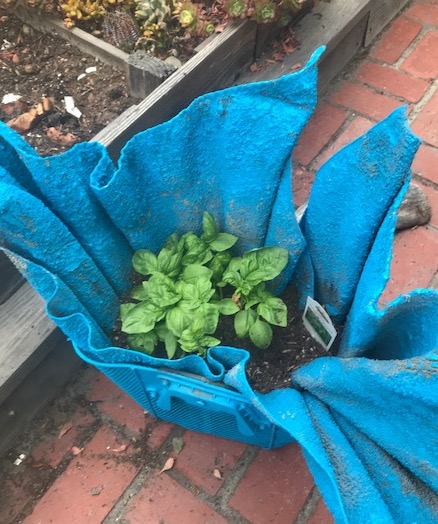
This is the result if you do not get enough concrete on the bottom. This was a cheaper (thinner) hotel towel. Lesson learned here it to put extra concrete on the bottom of the planter after you have draped it. Make sure you smooth it out so it sits flat .
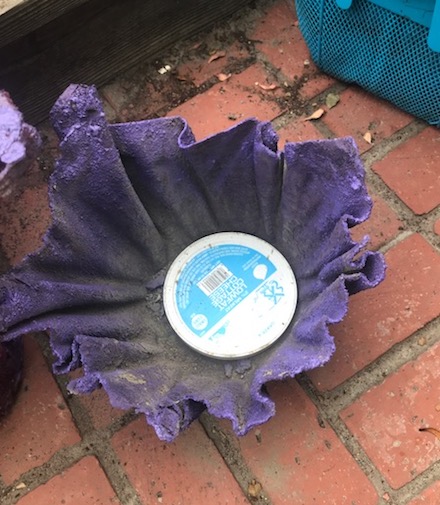
All in all, the concept is great and it doesn’t really take a lot of time. But..
- Watch both videos before you do this.
- Make sure you do this in an area where you can make a mess.
- Wear old clothes.
- Wear gloves, there is a thing called concrete poisoning, who knew!
- Have a old trowel or paintbrush to add more concrete on the bottom or on the sides that were mixed.
- Use a wider type of bucket so you can really mix the concrete and stir in the towel.
- Start small so you can determine how heavy and bulky this can be.
- Use plastic sheeting.
- Have fun
I will probably do this again as I want to get it right and have lots of towels to reuse
Resources
- The best DIY video is here at Home Talk , which goes into better details.
- Another video is Home Crux
- How Bath Towels are Made
